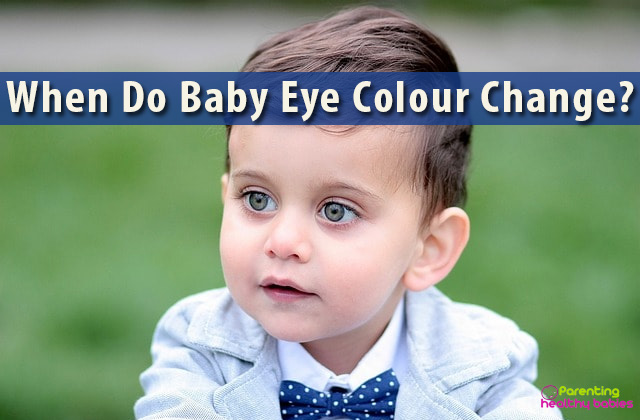Swaddling is an old practice of wrapping a baby up gently in a light, breathable blanket to help them feel calm and allow them to sleep well.
Read More: Winter Safety Tips for Kids
In This Article:
- Why is it Important to Swaddle a Baby?
- What are the Benefits?
- How do I Swaddle with a Blanket?
- How do I Swaddle with a Wrap
- Is Swaddling Safe?
- When you Should Stop Swaddling?
- What Safety Tips Should I Keep in Mind?
- What if My Baby doesn’t like being Swaddled?
How to Swaddle a Baby?
Why is it Important to Swaddle a Baby?
The idea is that being swaddled will help your little one feel snug and secure, like how they felt inside the womb. It makes them feel calm. A swaddle keeps your little baby cozy and warm until their internal thermostat kicks in and they can regulate their own body temperature by themselves.
What are the Benefits?
Being wrapped up snugly can stop your baby from being disturbed by their own startle reflex. You may have noticed your baby jerking their body when they’re sleeping. These jerks are the startle reflex (called hypnagogic startles) and are totally normal.
Your baby may also sleep for longer periods if they’re not been woken by their own startle reflex. Swaddling may also help to soothe them when they’re overstimulated.
Read More: Sleep Regression in Babies: Everything You Need to Know
How do I Swaddle with a Blanket?
Swaddling the right way may seem a little intimidating by yourself, but wrapping up your baby only takes a few easy steps. Here’s how to do it safely:
- Flatten your baby’s blanket out on a flat surface with one corner pointing up, like a dog ear. Fold the top corner down about 6 inches.
- Place your baby face-up on the blanket. The head should sit above the folded corner, and the body should extend straight down toward the bottom corner.
- Straighten your baby’s left arm. Then take the left side of the blanket and wrap it over the left arm and chest. Tuck the blanket underneath the other arm and back. At this point, your baby’s left arm will be covered but the right arm will be free.
- Fold the bottom corner of the blanket up over the baby’s body and tuck it under the first fold, under the chin. Straighten the right arm and pull the right side of the blanket over your baby’s body and tuck it under the left side.
- Loosely wrap the bottom of the blanket and tuck it underneath your baby.
How do I Swaddle with a Wrap
Swaddle wraps with Velcro tabs or zippers are the same as blanket wraps and deliver the same benefits without the need for any folding or tucking. The specific instructions may vary depending on which wrap you get. They tend to be easier to master than blankets and are much less likely to come untucked.
Is Swaddling Safe?
Swaddling your baby tightly may affect mobility and development. If the legs are pressed together and straight down, they’re more likely to develop problems with the hips (such as hip dysplasia). Make sure that you give your baby plenty of room to move their legs and feet and room to bend their legs up and out at the hips.
Swaddle blankets that are too loose or that come unwrapped during sleep could cover a baby’s face and potentially cause suffocation. The risk is increased by the fact that swaddled babies tend to sleep extra soundly. So if their face gets covered by a swaddle blanket, they will be less likely to wake up and change their positions.
When you Should Stop Swaddling?
Swaddling can be a smart move for most newborns. But it’s dangerous for older babies who want to break free from their blankets. Being wrapped up can mess with healthy development for older babies too since it prevents them from developing age-appropriate motor skills. Usually, its recommended to stop after 2 months from birth.
Read More: 11 Home Remedies for Bad Baby Breath
What Safety Tips Should I Keep in Mind?
There are several things you should keep in mind while swaddling, such as:
- Use a thin, breathable cloth when swaddling your baby.
- Leave the head uncovered and don’t swaddle above the shoulders.
- Always place your swaddled baby to sleep on the back, never on the sides or front
- Stop swaddling as soon as your baby shows signs of rolling over onto the side or tummy.
- Only swaddle them from birth. Do not introduce swaddling when the risk of Sudden Infant Death Syndrome (SIDS) is greatest, at two to three months.
- If you swaddle your baby, do it for every sleep during the day and night so that your baby becomes used to the feeling of being swaddled.
- Swaddle your baby firmly, but not too tightly. Your baby’s legs and feet should be able to move freely.
- Make sure to check your baby’s temperature frequently. Overheating may enhance the risk of SIDS. Check the back of her neck or her tummy with two fingers.
- If you leave your baby in the care of someone else, make sure they know how to swaddle your baby safely.
What if My Baby doesn’t like being Swaddled?
Some seem to find swaddles restrictive and will try to fight their way free every time. If getting swaddled makes your baby more crazed than calm, you don’t have to force it.
Before giving up completely, you might want to experiment with alternatives. If your baby seems to want their arms out, try leaving the arms out. If your little one loves to kick, they might do better with a Velcro tab swaddle (which is harder to get rid off) or asleep sack-swaddle hybrid (which allows room for more leg movement).
Source
https://www.nct.org.uk/baby-toddler/slings-and-swaddling/swaddling-baby-benefits-risks-and-seven-safety-tips
https://www.whattoexpect.com/first-year/baby-care/baby-care-101/secrets-to-swaddling.aspx













